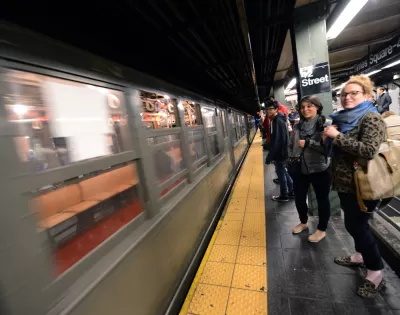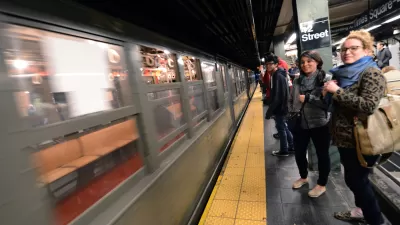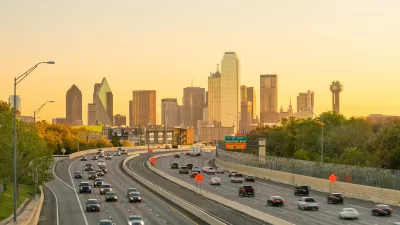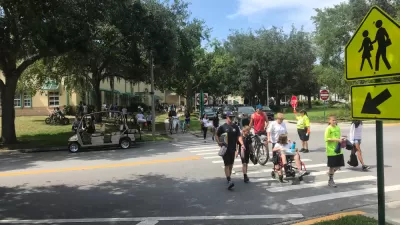Transit in general, and buses in particular, are losing riders, especially during off peak hours. Car pooling is down sharply as well.

From 1996 to 2014 public transit ridership in the United States increased more or less steadily, with much of that growth coming from gains in New York subway ridership. Now that trend is over, and transit ridership is on the decline. This decline has taken place even as the country's population has increased, meaning that the per capita declines are even more pronounced.
"What I argue here is that what we’re seeing now is unquestionably a decline in transit ridership—almost universal among large cities. Yet there are reasons to believe it isn’t a permanent shift, given that its causes don’t appear to be primarily related to technological change," Yonah Freemark writes.
Looking at commuting, Freemark finds the dominance of driving alone isn't new but a trend that can be tracked back to at least the seventies. In past decades, carpooling accounted for more than 20 percent of all trips to and from work, now carpooling, transit, walking, and biking put together don't add up to even 25 percent of trips. "The significant decline over the past few years is reinforcing what has been happening for ages, probably not reflecting the availability of new transportation modes likes ride-hailing or a sudden change of interest of the public away from transit," Freemark argues.
But talk of a transit collapse may end up a self-fulfilling prophecy. If officials, convinced by grim arguments about transit, decide to forgo investment in favor of more car-focused infrastructure and to let private services like Uber handle mobility, then a few years of falling ridership could turn into a death spiral.
FULL STORY: U.S. transit systems are shedding riders. Are they under threat?

Planetizen Federal Action Tracker
A weekly monitor of how Trump’s orders and actions are impacting planners and planning in America.

The Simple Legislative Tool Transforming Vacant Downtowns
In California, Michigan and Georgia, an easy win is bringing dollars — and delight — back to city centers.

San Francisco's School District Spent $105M To Build Affordable Housing for Teachers — And That's Just the Beginning
SFUSD joins a growing list of school districts using their land holdings to address housing affordability challenges faced by their own employees.

In More Metros Than You’d Think, Suburbs are Now More Expensive Than the City
If you're moving to the burbs to save on square footage, data shows you should think again.

The States Losing Rural Delivery Rooms at an Alarming Pace
In some states, as few as 9% of rural hospitals still deliver babies. As a result, rising pre-term births, no adequate pre-term care and "harrowing" close calls are a growing reality.

The Small South Asian Republic Going all in on EVs
Thanks to one simple policy change less than five years ago, 65% of new cars in this Himalayan country are now electric.
Urban Design for Planners 1: Software Tools
This six-course series explores essential urban design concepts using open source software and equips planners with the tools they need to participate fully in the urban design process.
Planning for Universal Design
Learn the tools for implementing Universal Design in planning regulations.
Smith Gee Studio
City of Charlotte
City of Camden Redevelopment Agency
City of Astoria
Transportation Research & Education Center (TREC) at Portland State University
US High Speed Rail Association
City of Camden Redevelopment Agency
Municipality of Princeton (NJ)





























